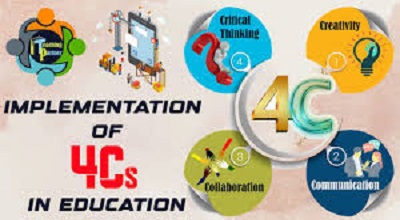4 C’s of Classroom Management
The 4 C’s of classroom management are a framework that emphasizes four key elements that contribute to effective classroom management. These elements help create a positive and productive learning environment.
The 4 C’s are:
- Caring: Caring involves building positive relationships with students. Teachers who show genuine care and concern for their students are more likely to establish trust and rapport in the classroom. When students feel that their teacher cares about their well-being, they are more likely to engage in the learning process and follow classroom rules.
- Consistency: Consistency means applying rules, consequences, and expectations consistently and fairly. When rules and consequences are consistently enforced, students know what to expect, which leads to a sense of security and predictability. Inconsistent management can lead to confusion and resentment among students.
- Communication: Effective communication is crucial in classroom management. Teachers need to clearly communicate expectations, instructions, and feedback to students. Encouraging open and respectful communication also allows students to express themselves and resolve conflicts in a healthy manner.
- Control: Control refers to the teacher’s ability to maintain order and structure in the classroom. Teachers need to establish clear routines and procedures to keep the classroom organized and minimize disruptions. Having control over the learning environment ensures that teaching and learning can occur smoothly.
Importance of the 4 C’s in Classroom Management:
- Creating a Positive Learning Environment: The 4 C’s contribute to the creation of a positive and supportive classroom environment. When students feel cared for, understand the rules, can communicate with the teacher, and see that the classroom is well-managed, they are more likely to feel comfortable and motivated to learn.
- Enhancing Student Engagement: When teachers implement the 4 C’s effectively, students are more likely to be engaged in the learning process. They are less distracted by behavior issues and more focused on their academic tasks.
- Building Positive Teacher-Student Relationships: The 4 C’s help build strong teacher-student relationships based on trust and respect. These relationships can have a significant impact on student behavior and achievement.
- Minimizing Disruptions: Consistency and control are particularly important for minimizing disruptions in the classroom. When students know what is expected of them and understand the consequences of their actions, they are less likely to engage in disruptive behavior.
- Fostering Social and Emotional Development: Caring and effective communication contribute to students’ social and emotional development. These skills are not only essential for classroom management but also for helping students develop important life skills.
Summary
In summary, the 4 C’s of classroom management are essential principles that help teachers create a positive and effective learning environment, foster student engagement, and build strong teacher-student relationships. By implementing these principles, teachers can better manage their classrooms and promote a conducive atmosphere for learning.
